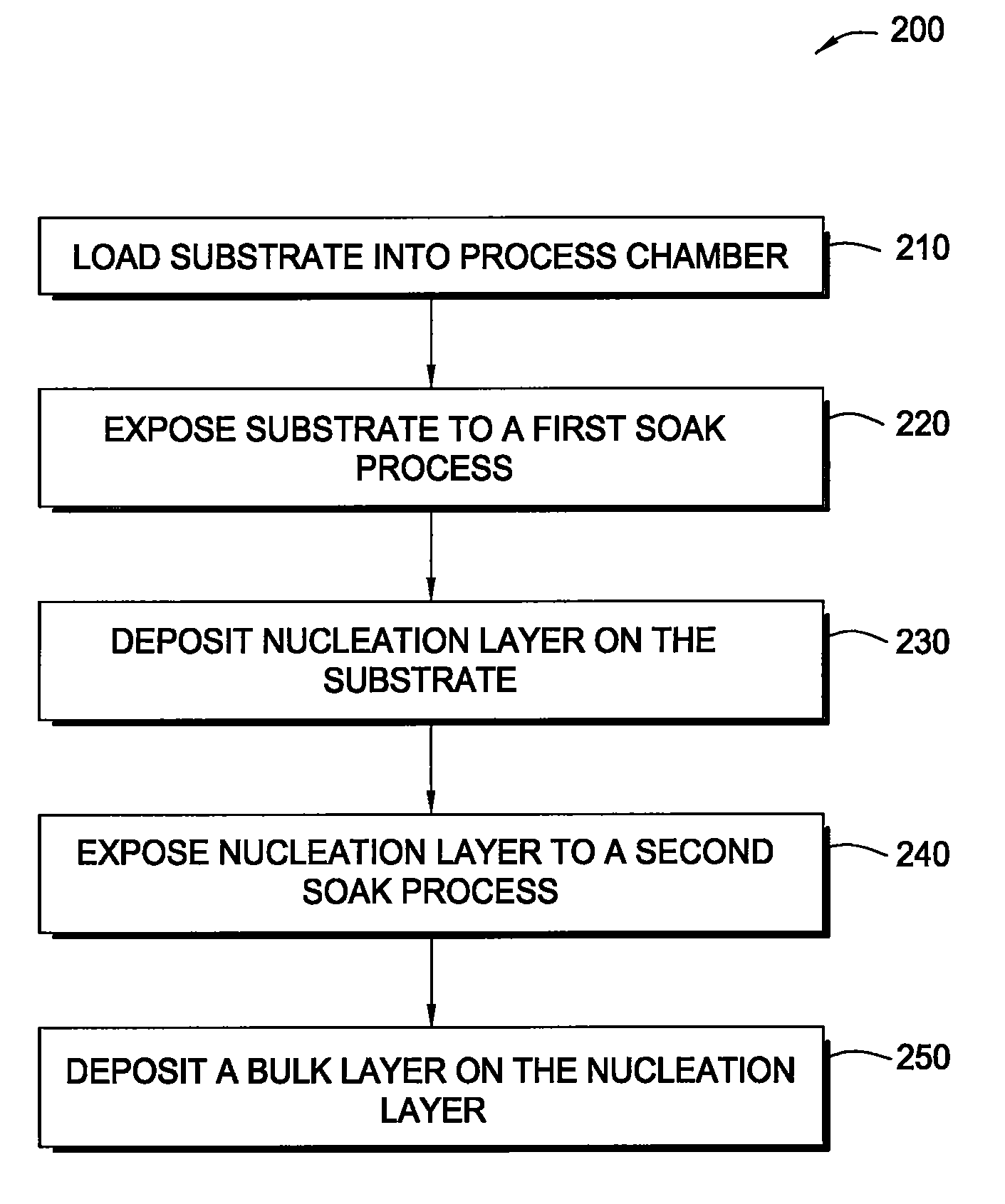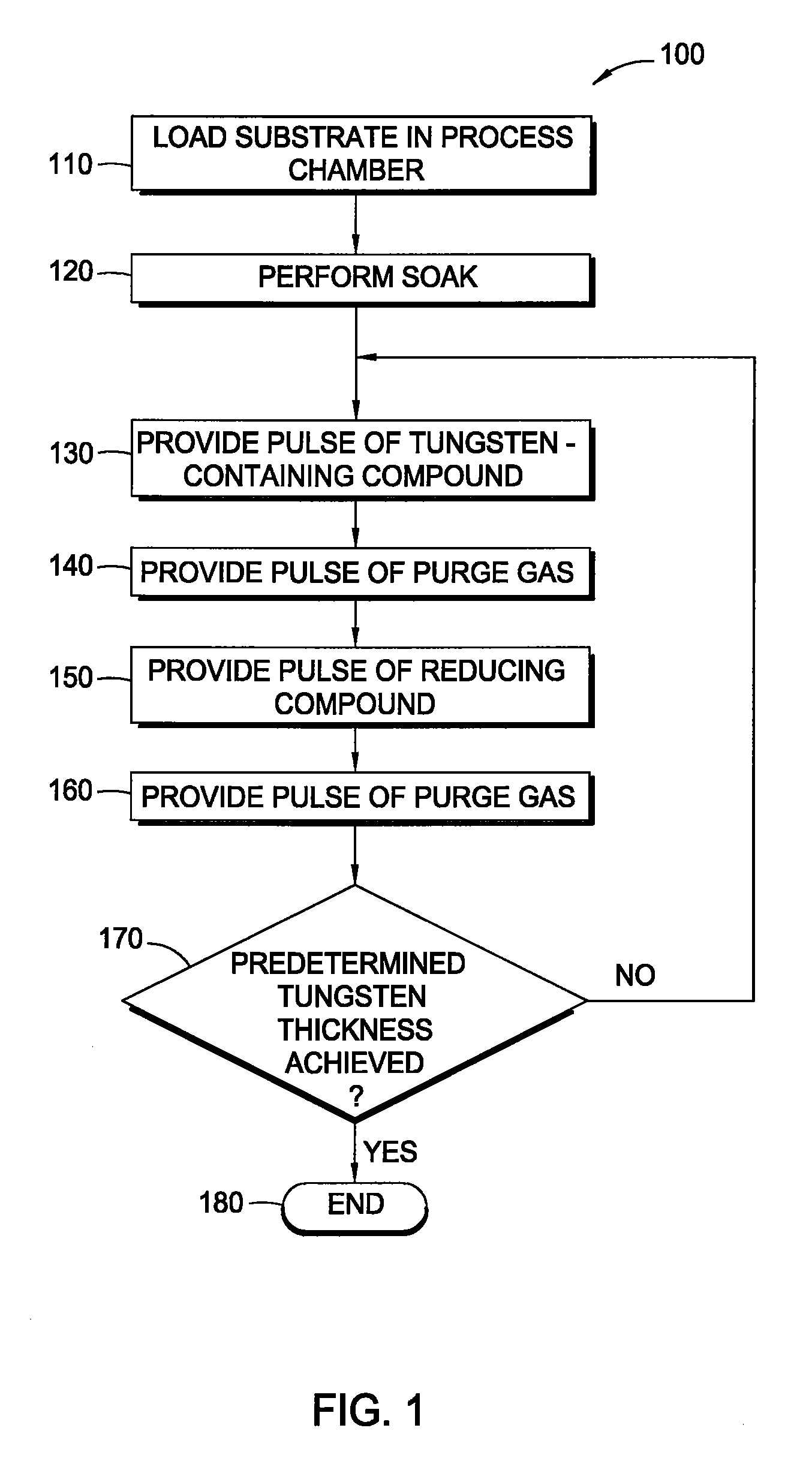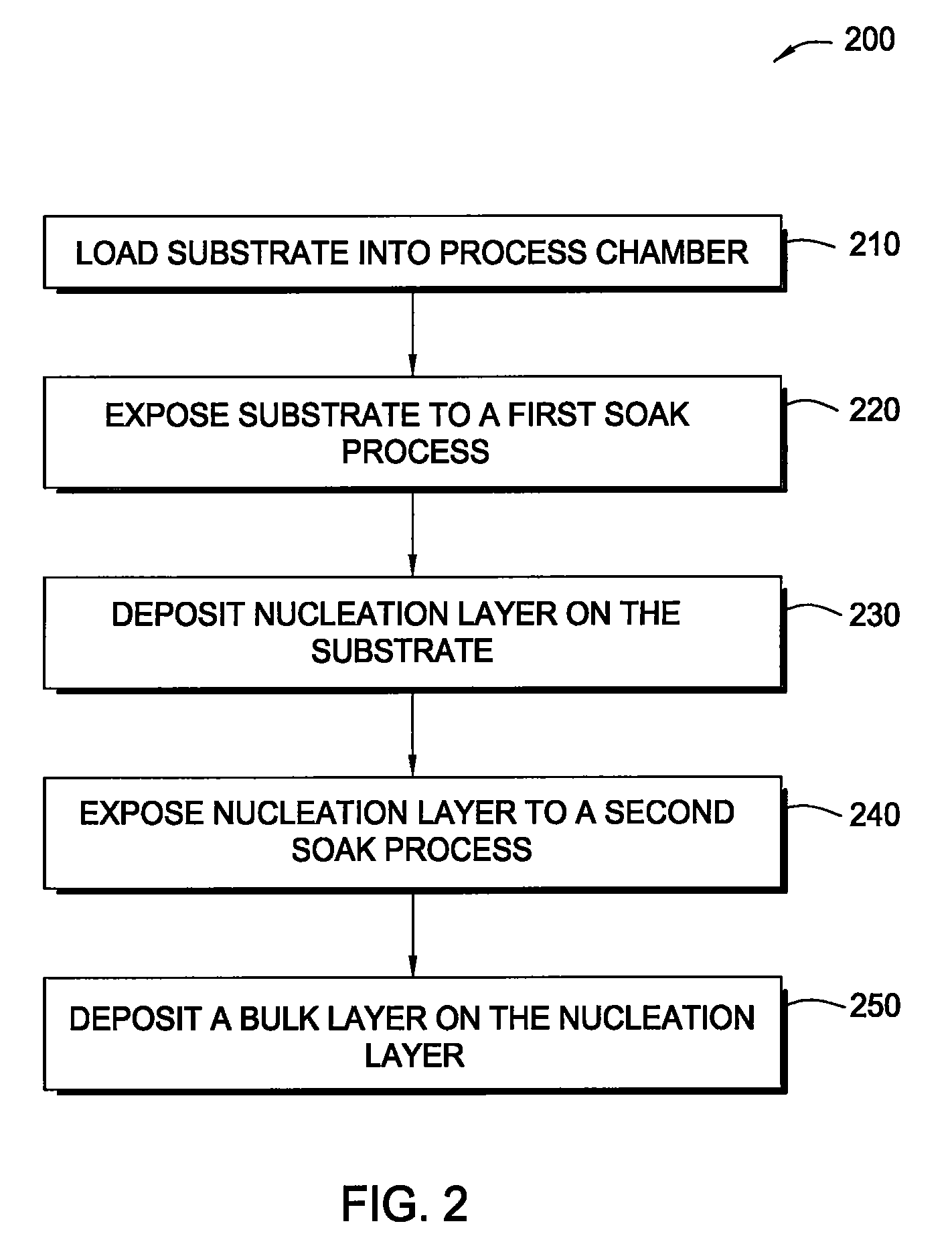Atomic layer deposition of tungsten materials
- Summary
- Abstract
- Description
- Claims
- Application Information
AI Technical Summary
Benefits of technology
Problems solved by technology
Method used
Image
Examples
example 1
[0087]The substrate was placed into a deposition chamber and exposed to a soak process under the following conditions:[0088]Reagent: B2H6;[0089]Pressure: about 15 Torr;[0090]Temperature: about 375° C.;[0091]Flow rates: about 200 sccm of 5% B2H6 in N2 and about 8,000 sccm of H2;[0092]Hydrogen / hydride flow rate ratio:about 800:1; and[0093]Duration: about 10 seconds.
[0094]Next, a tungsten nucleation layer was formed on the barrier layer in the deposition chamber from the previous soak process using a pulsed-CVD process under the following conditions:[0095]Reagents: WF6, B2H6, and H2;[0096]Pressure: about 5 Torr;[0097]Temperature: about 375° C.;[0098]Flow rates: about 60 sccm of WF6, about 100 sccm of 5% B2H6 in N2, and about 6,000 sccm H2;[0099]Hydrogen / hydride flow rate ratio: about 1,200:1; and[0100]Pulse duration: about 1.5 seconds.
[0101]The pulsed-CVD process was continued until the nucleation layer had a thickness of about 25 Å. Thereafter, the substrate was kept in the deposition...
example 2
[0109]The substrate was placed into a deposition chamber and exposed to a soak process under the following conditions:[0110]Reagent: SiH4;[0111]Pressure: about 90 Torr;[0112]Temperature: about 400° C.;[0113]Flow rates: about 200 sccm of SiH4; and[0114]Duration: about 24 seconds.
[0115]Next, a tungsten nucleation layer was formed on the barrier layer in the deposition chamber from the previous soak process using a pulsed-CVD process under the following conditions:[0116]Reagents: WF6, B2H6, and H2;[0117]Pressure: about 5 Torr;[0118]Temperature: about 400° C.;[0119]Flow rates: about 60 scorn of WF6, about 100 sccm of 5% B2H6 in N2, and about 6,000 scorn of H2;[0120]Hydrogen / hydride flow rate ratio: about 1,200:1; and[0121]Pulse duration: about 1.5 seconds.
[0122]The pulsed-CVD process was continued until the nucleation layer had a thickness of about 25 Å. Thereafter, the substrate was kept in the deposition chamber and exposed to a second soak process under the following conditions:[0123...
example 3
[0130]The substrate was placed into a deposition chamber and exposed to a soak process under the following conditions:[0131]Reagent: SiH4;[0132]Pressure: about 90 Torr;[0133]Temperature: about 400° C.;[0134]Flow rates: about 200 sccm of SiH4; and[0135]Duration: about 24 seconds.
[0136]Next, a tungsten nucleation layer was formed on the barrier layer in the deposition chamber from the previous soak process using a pulsed-CVD process under the following conditions:[0137]Reagents: WF6 and SiH4;[0138]Pressure: about 5 Torr;[0139]Temperature: about 400° C.;[0140]Flow rates: about 60 sccm of WF6 and about 30 sccm of SiH4; and[0141]Pulse duration: about 1.5 seconds.
[0142]The pulsed-CVD process was continued until the nucleation layer had a thickness of about 20 Å. Thereafter, the substrate was kept in the deposition chamber and exposed to a second soak process under the following conditions:[0143]Reagent: B2H6 and H2;[0144]Pressure: about 90 Torr;[0145]Temperature: about 400° C.;[0146]Flow ...
PUM
| Property | Measurement | Unit |
|---|---|---|
| Temperature | aaaaa | aaaaa |
| Temperature | aaaaa | aaaaa |
| Time | aaaaa | aaaaa |
Abstract
Description
Claims
Application Information
 Login to View More
Login to View More - R&D
- Intellectual Property
- Life Sciences
- Materials
- Tech Scout
- Unparalleled Data Quality
- Higher Quality Content
- 60% Fewer Hallucinations
Browse by: Latest US Patents, China's latest patents, Technical Efficacy Thesaurus, Application Domain, Technology Topic, Popular Technical Reports.
© 2025 PatSnap. All rights reserved.Legal|Privacy policy|Modern Slavery Act Transparency Statement|Sitemap|About US| Contact US: help@patsnap.com



